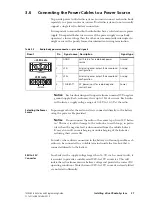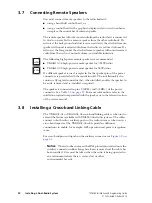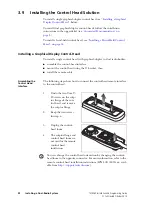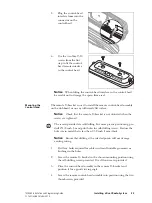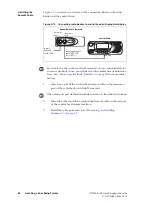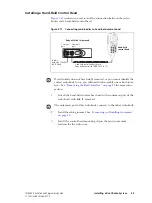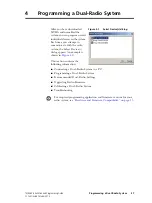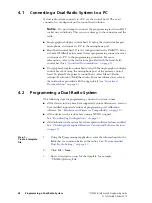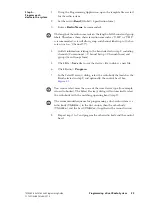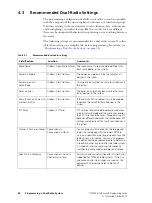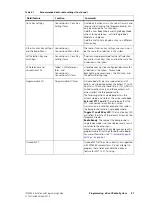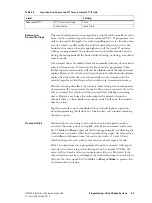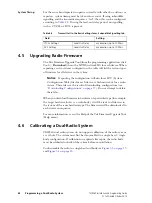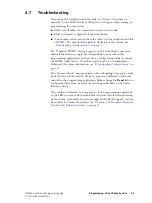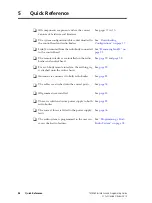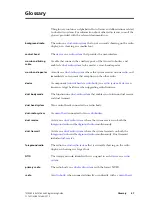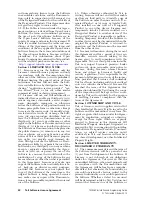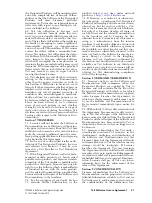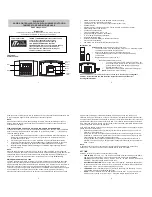
40
Programming a Dual-Radio System
TM8260 Installation and Programming Guide
© Tait Limited
October 2014
4.3
Recommended Dual-Radio Settings
The programming configuration of all devices must be as similar as possible,
with the exception of the operating band, radio name, channels and groups.
If features relating to the user interface (such as function keys, radio menus,
and backlighting), and other features like the security lock are different,
there may be unexpected behavior when powering on or switching between
the radios.
The following settings are recommended for a dual-radio system. Use this
table when setting up a template file, before programming the system (see
“Programming a Dual-Radio System” on page 38
Table 4.1
Recommended dual-radio settings
Field/Feature
Location
Comments
Radio Name
Global > Specifications form The radio name, if used, should be different for
both radio bodies in the system.
Power On Mode
Global > Start-up form
The power on mode must be the same for all
devices in the system.
Power-up on Last
Active Body
Global > Start-up form
This check box must be the same for all devices in
the system.
Reset on Error
Global > Start-up form
The Reset on Error check box must be the same
for all devices in the system.
Security Lock on Power Up
and Security PIN
Global > Start-up form
If the security PIN is enabled, it must be enabled
(and have the same PIN) for all devices in the
system.
PTT fields
Global > PTT form
PTT settings for both radio bodies are used when
in dual-transmit mode and the radio user presses
the PTT. Care should be taken if programming PTT
behavior differently between the radio bodies. PTT
settings are typically set the same for all devices in
the system.
Startup (Channel or Group) Conventional >
Conventional UI form
You can program this option for the foreground
radio (the radio body with the lowest NTID) to
start on a specific channel or group each time the
radio system is turned on. You can also program
this option for the background radio to default to
a specific channel or group after the radio system
is turned on, and the radio user subsequently
switches the active radio or enables dual receive.
Selcall Stun and Revive
Conventional > Selcall >
Control Status form
Selcall stun and revive functionality is currently not
supported for TM8260 radio systems. If the stun
and revive control status types are used, set the
equivalent Rx Processing fields to No for all
devices.


